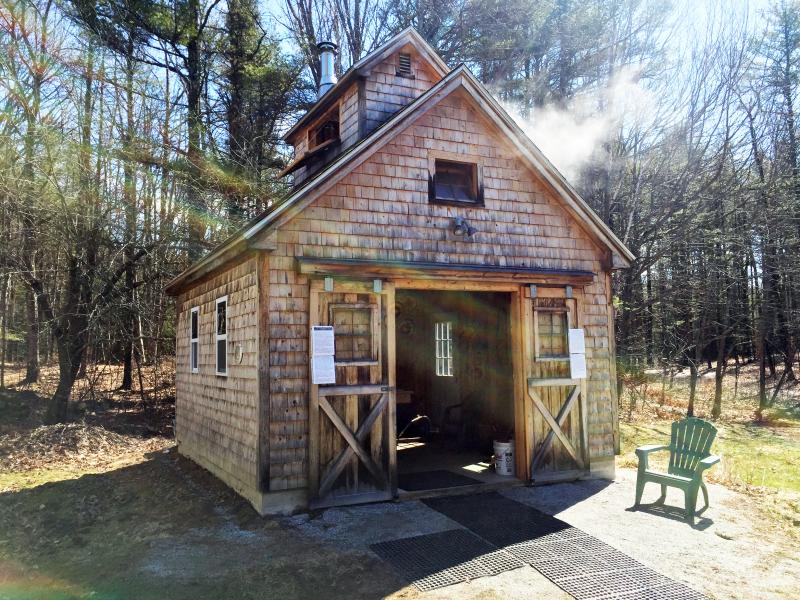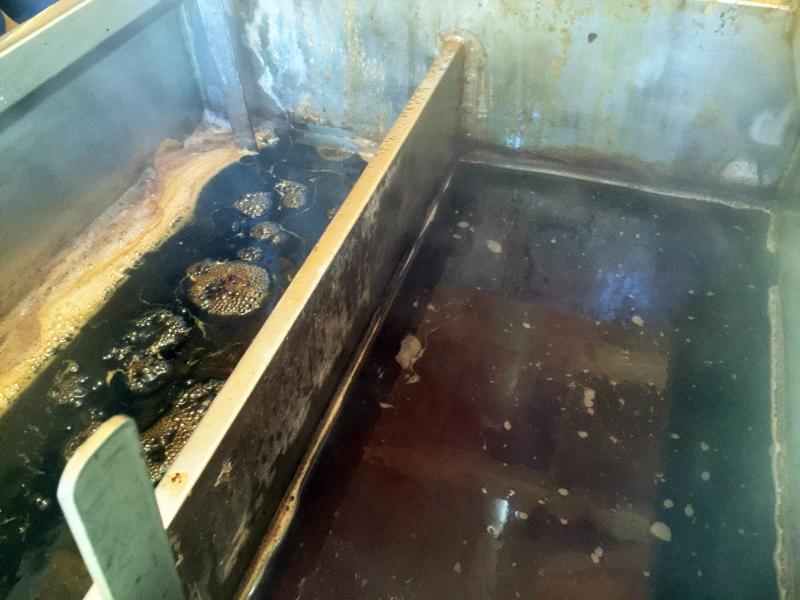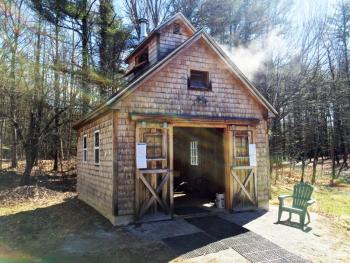A sweet obsession
 Henhouse Sugaring in Edgecomb is the scene of some sweet aromas and maple syrup tasting on Saturday, March 26. SUZI THAYER/Boothbay Register
Henhouse Sugaring in Edgecomb is the scene of some sweet aromas and maple syrup tasting on Saturday, March 26. SUZI THAYER/Boothbay Register
 The sap is cooked in three stages in a large vat, or evaporator. SUZI THAYER/Boothbay Register
The sap is cooked in three stages in a large vat, or evaporator. SUZI THAYER/Boothbay Register
 Henhouse Sugaring in Edgecomb is the scene of some sweet aromas and maple syrup tasting on Saturday, March 26. SUZI THAYER/Boothbay Register
Henhouse Sugaring in Edgecomb is the scene of some sweet aromas and maple syrup tasting on Saturday, March 26. SUZI THAYER/Boothbay Register
 The sap is cooked in three stages in a large vat, or evaporator. SUZI THAYER/Boothbay Register
The sap is cooked in three stages in a large vat, or evaporator. SUZI THAYER/Boothbay Register
Spring in Maine means a lot of good things: longer, warmer days, robins, budding trees and maple syrup.
On March 26, there were some blue balloons and a sign at the corner of Eddy and Cross Point roads in Edgecomb, and the faintest aroma of boiling maple sap was wafting around.
Chris Sieracki and his wife Margot Stiassni-Sieracki had posted the sign: “1.1 miles to Maple Syrup Saturday. Henhouse Sugaring, at 232 Cross Point Road,” a small locally owned maple syrup producer.
Chris Sieracki was in his sugar house cooking up a batch of sweet-smelling sap in a large metal container with three separate compartments. All three were full of the stuff, and bubbling away. “This is a maple syrup evaporator,” he said. “Its main job is to cook the sap and to evaporate water from it.”
The clear sap starts in one of the three compartments, where it boils at a high temperature, then enters the second 'pre-syrup' compartment, through holes in a divider, and finally into the third one, where it finishes cooking. At that point Sieracki tests the syrup for the correct sugar density, which he said is 66 percent.
Next the syrup is transferred through a filter into a large bin, with a burner, to sterilize it. “I bring it up to 180 degrees so that mold and bacteria are killed off,” he said. Then it’s bottled and labeled.
Sieracki said he had been using the old method of hanging buckets from the trees, then he began using sap lines, and a friend showed him a way to pump the sap with a vacuum system. “The pump that was suggested was very expensive, so I went online and found better pumps for a lot less money — around one fifth the cost.”
There are 400 maple trees and 150 taps behind the house. The sap is pumped into a large tank at the back of the sugar house. From there it’s pumped into the sugar house when he’s ready to cook it. The plastic tubing running from the trees is clear plastic, so visitors can see the sap being pumped on its way to the sugarhouse.
Sieracki said he started making syrup 25 years ago, but has only been using the current setup for three years. “We started in Vermont, and moved here 20 years ago. There was a hen house here on the property that we turned into a sugar house,” hence the name, Henhouse Sugaring.
The Sierackis are hoping for 40 gallons of syrup this season. That represents around 3,500 gallons of sap.
The running of sap is highly dependent on dramatic changes in temperature from night to morning. It starts running when there is a frost at night and a warm day following. This was a good winter for it. It began early and, due to the temperatures, it’s a long season. “We started cooking on February 1 this year, due to the relatively warm temperatures,” Sieracki said.
“The biggest sap day of this year was the same day those thunderstorms came through at 5:30 in the morning. Everybody remembers that day. The same day the house burned down on Westport Island. I was in here making syrup like crazy and I heard all these sirens, because Westport is only a mile away, across the water.”
He said it's been a little slower since, because there hasn't been such a dramatic change in temperature. “It went from below freezing to in the 50s that day.”
One of the visitors on Saturday, Larry Roy, said he knew a little about maple sugaring. He had relatives in Canada who made their own syrup many years ago. “It was an old-fashioned approach,” he said. “They used a huge pan — around five by ten feet — and cooked the sap on a huge wood stove. The big treat for kids was to pour the syrup over the snow and make candy.”
The syrup-making will continue for as long as there is a good frost at night and a warm day following. Last year Sieracki said he made syrup from February 2 until the first week in April. “I think it's going to be another early and long season.
“The day every sugar maker dreads is when it gets into the 60s. The sap stops flowing. The trees are like, 'OK, now it's time to grow!'”
When all is said and done, the final product is thick and golden brown and oh so sweet.
“I'm a technical person,” Sieracki said. “Technical challenges are really interesting. It's not just putting a bucket on a tree and collecting sap and boiling it. Everything can be improved with a little bit of technology. The sap yield can be improved with appropriate use of pumps. There's so much more you can keep doing.
“I think about this year-round, day and night.” Sieracki said. “It's an obsession. I was testing reverse osmosis in our yard last summer to see if I could get it to work. It's a hobby and a passion, and I obsess over it because I want it to come out right.”
Henhouse Sugaring’s phone number is 207-931-7039. Call ahead to be sure the sugar house is operating. It’s well worth the trip.
Event Date
Address
232 Cross Point Road
Edgecomb, ME 04556
United States
























